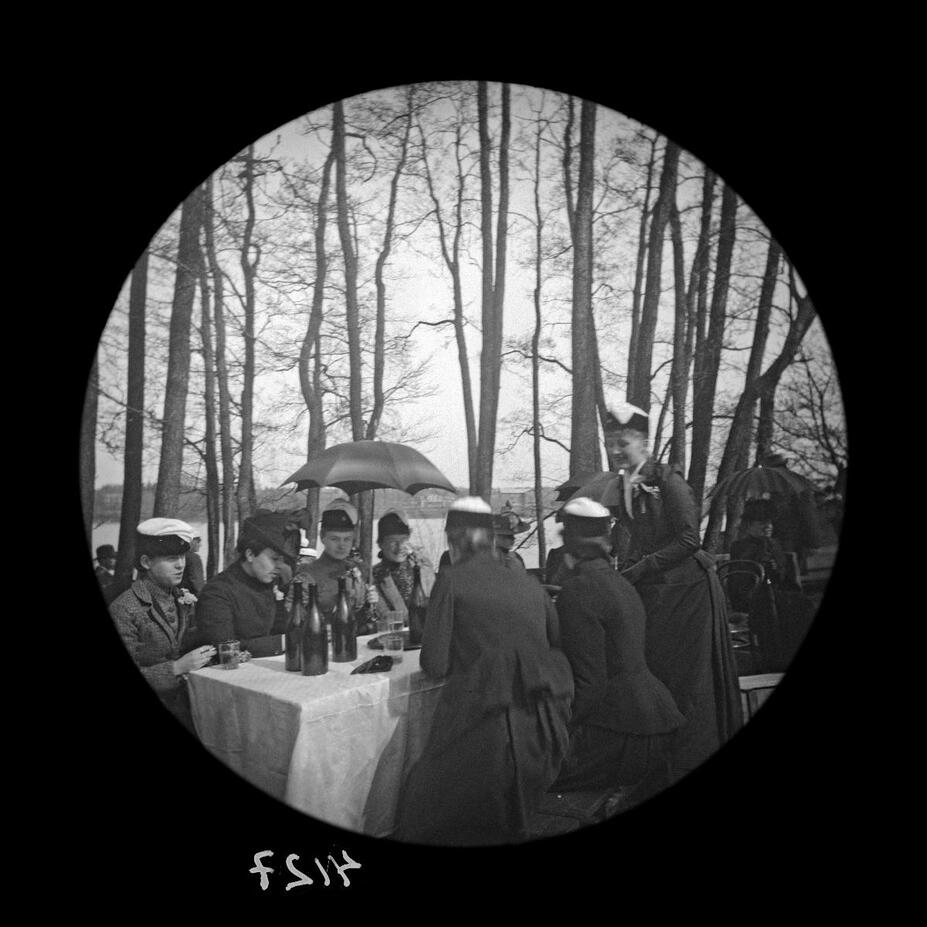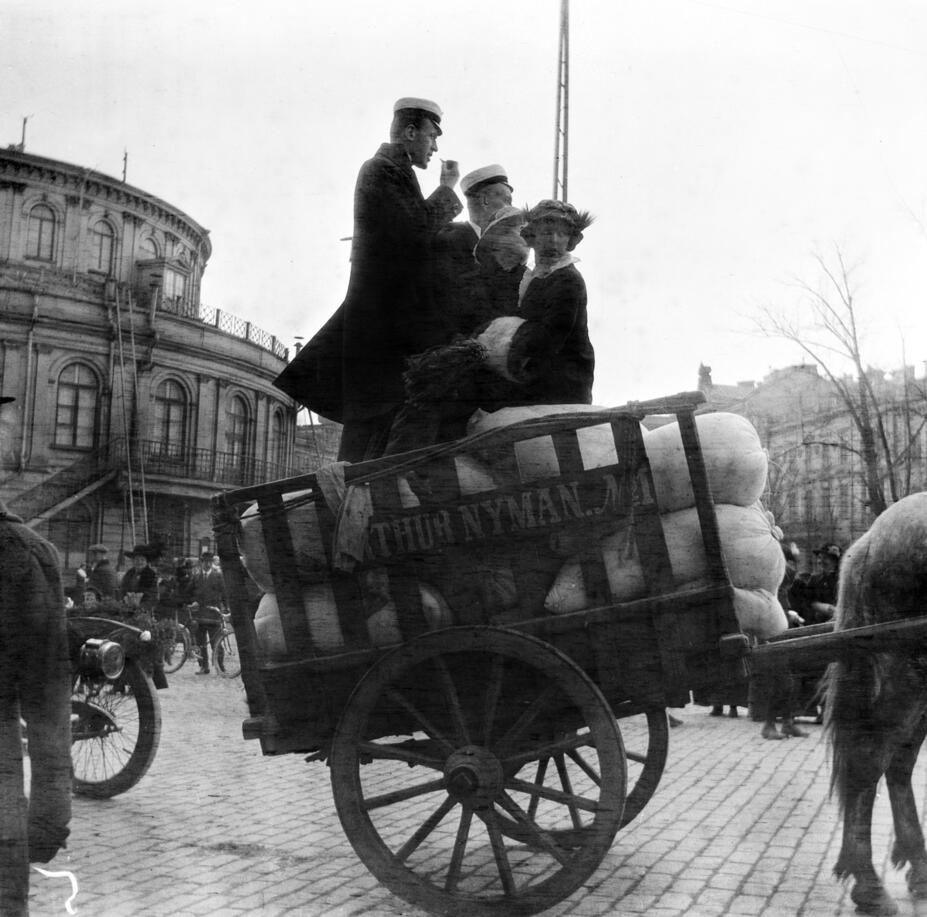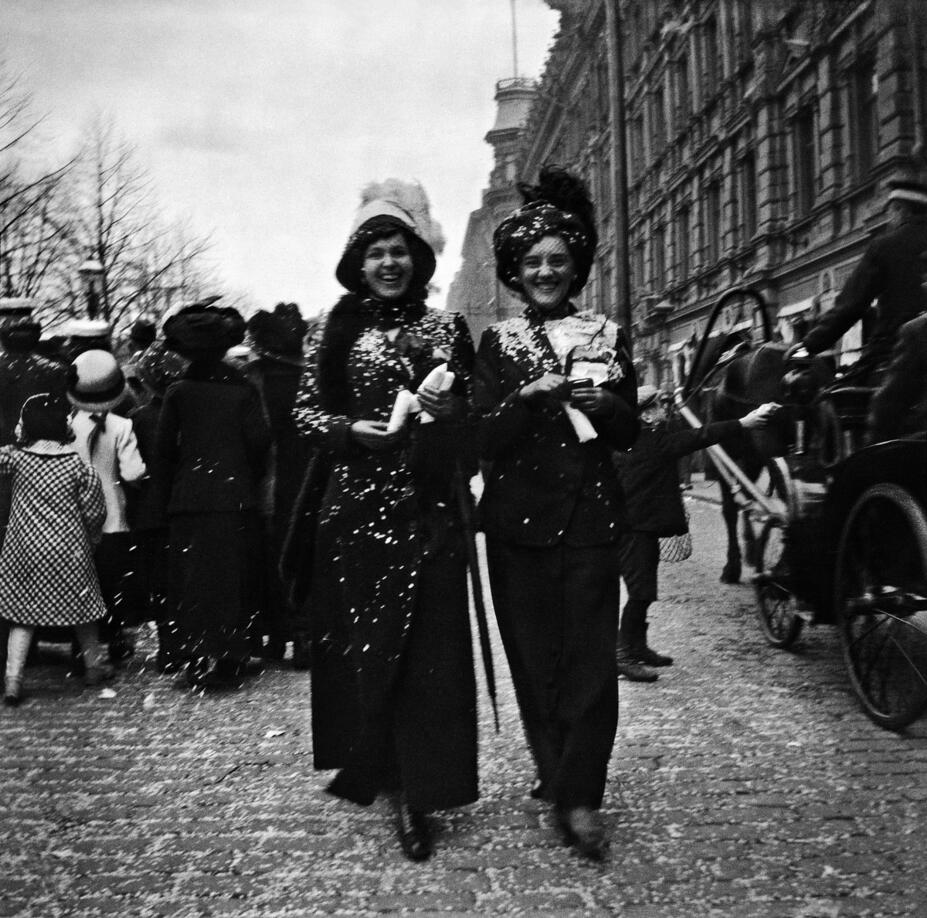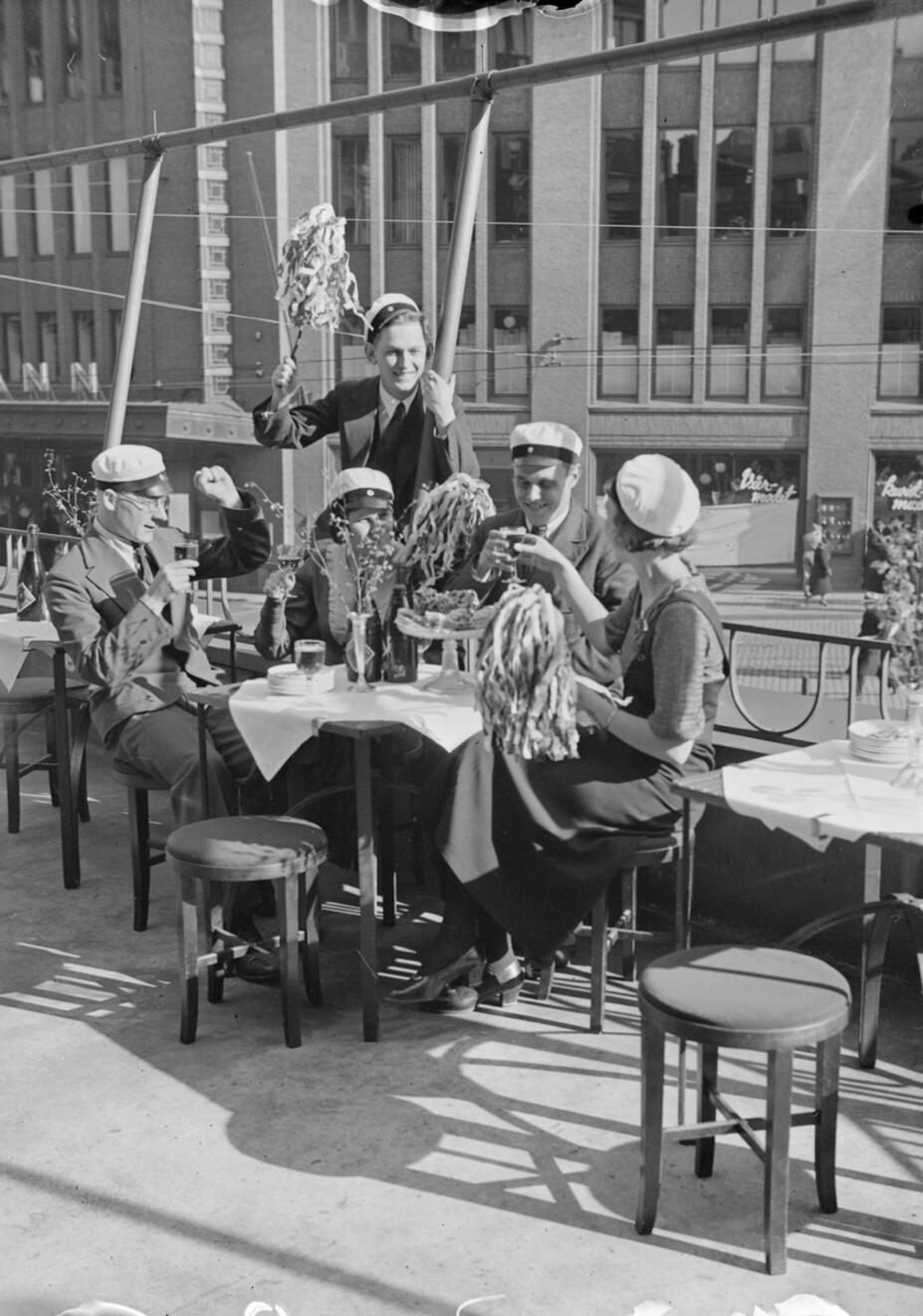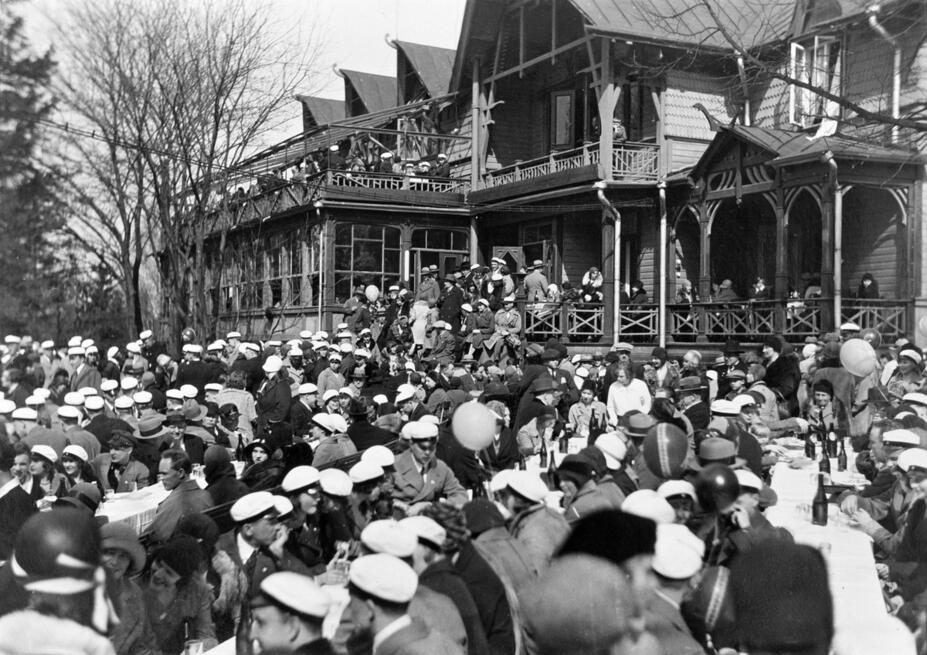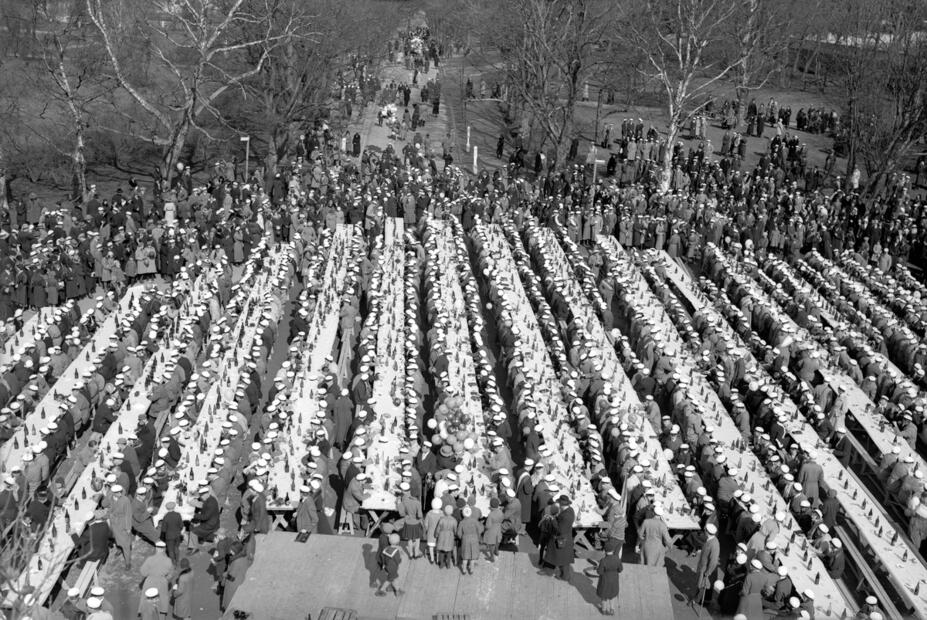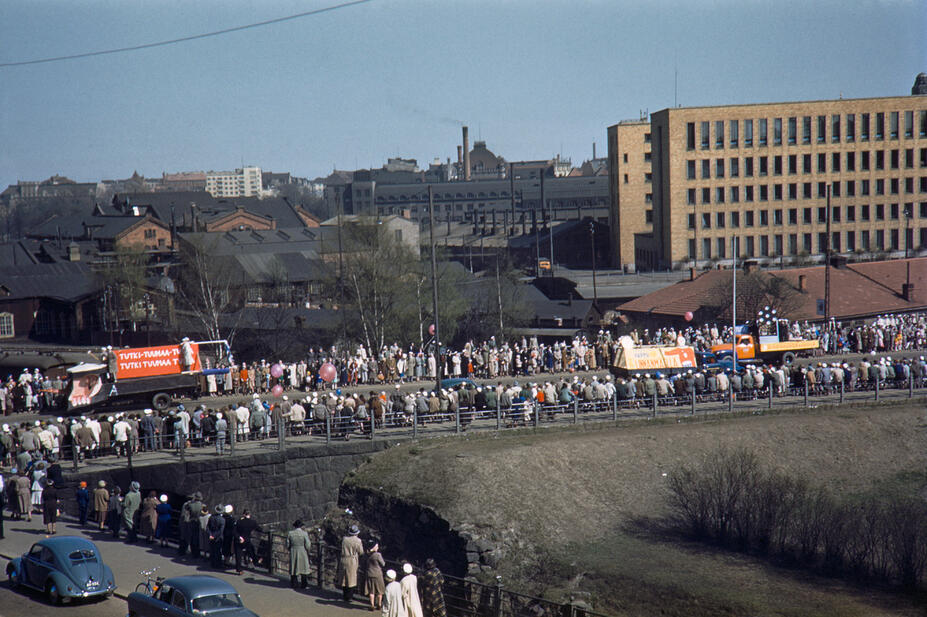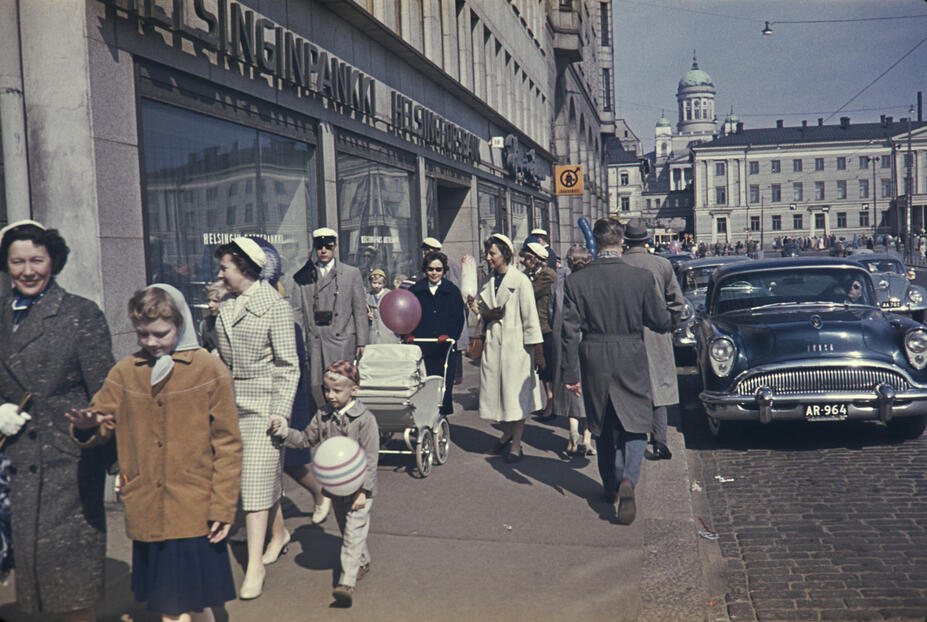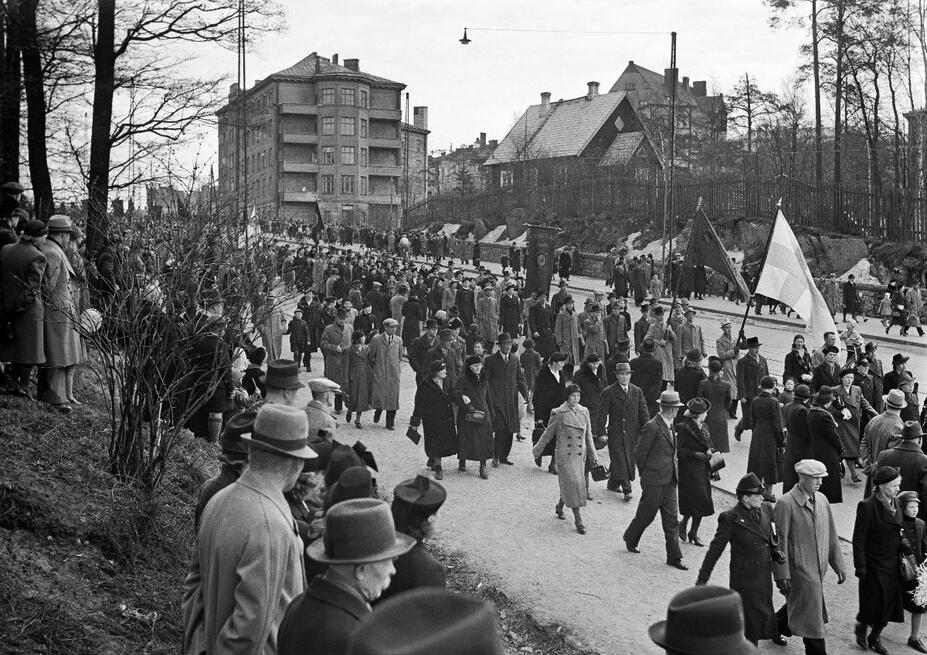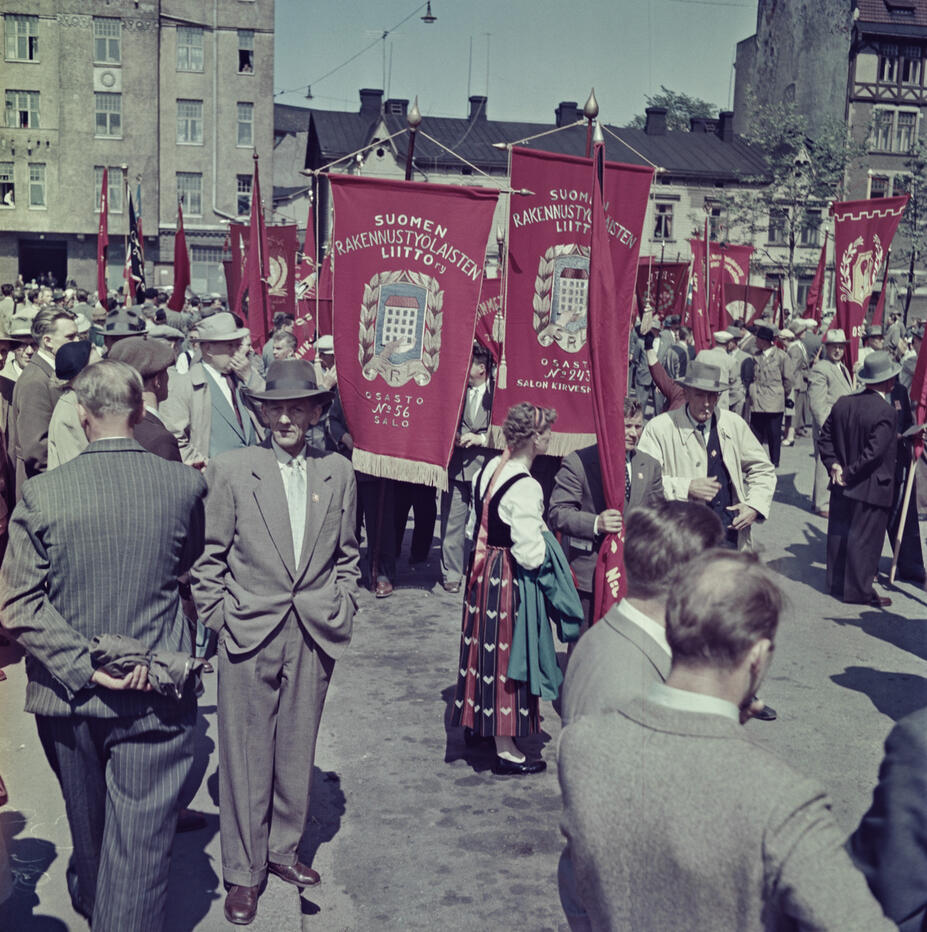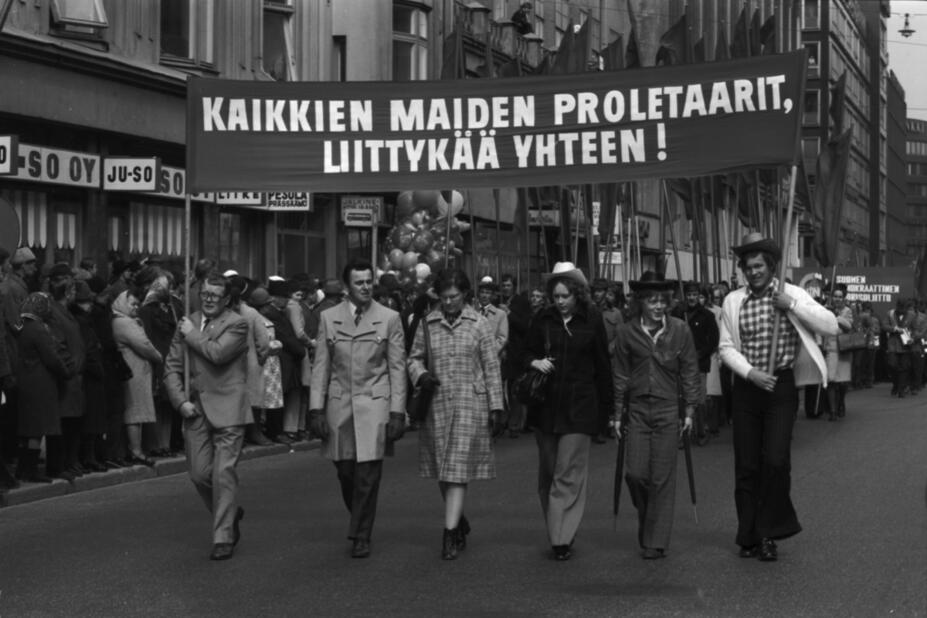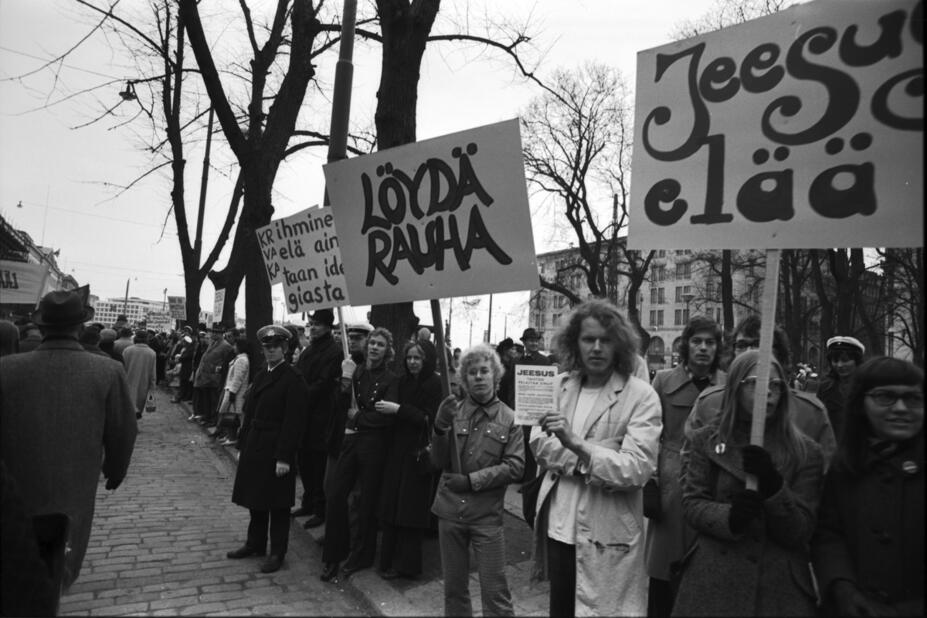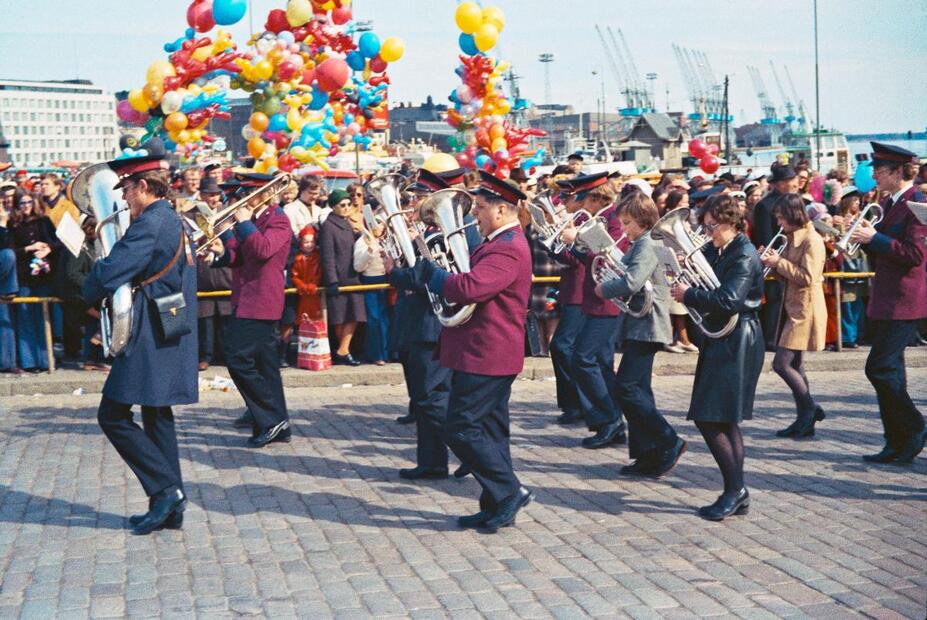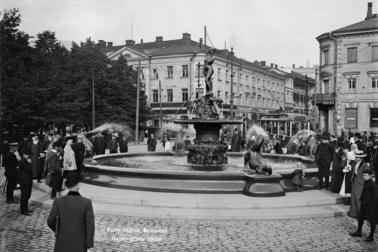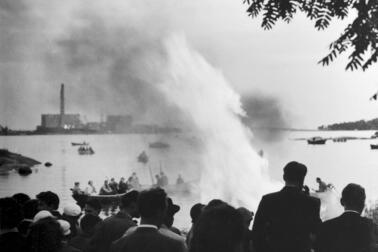The many faces of May Day stem from its diverse background, which includes the letting of the cattle to the pasture, accompanied by magical rituals, and the medieval Saint Walpurga. As May Day is a celebration of spring, people usually want to be outdoors – regardless of the weather. May Day used to be a time for people to dress up in a new spring coat or a new pair of fashionable shoes. The dressing up and the party spirit could help you find a May Day sweetheart.
At a time when only a few people had passed the matriculation examination, the student cap had great symbolic value: it was a true status symbol. In the 1930s, for example, the student cap was treated with care and respect, carried in a white box when on one’s way to see the Havis Amanda receive its cap. For parents from humble beginnings, a child receiving their student cap was a source of great pride. That is why the whole family would gather in a public place on May Day to admire young people in their student caps and their May Day celebrations.
Students’ May Day
General upper secondary school graduates have gathered in Helsinki to celebrate May Day since the 19th century. The style of the celebrations has varied from formal and patriotic to a carnival. Students of technology or ‘teekkarit’ are particularly visible and loud celebrants. For them, May Day is the most important holiday of the year, which is celebrated for at least a week. The technology students’ May Day includes ‘teekkari dipping’ for new students, parades, stunts and humorous publications. The oldest gathering places for students have been the Esplanadi, Kaivopuisto and Kaisaniemi parks. The Alppila restaurant in Alppipuisto park also used to be a popular place to spend May Day, even though it was far from the city centre.
Families’ May Day
For families with children, May Day has traditionally involved buying balloons and May Day pom poms, and perhaps also a visit to Linnanmäki amusement park. For some families, a May Day lunch at a familiar restaurant is a decades-old tradition that brings different generations together. Some even book a table for the next year’s May Day lunch when leaving the restaurant.
May Day of ideological divisions
Because of its ecclesiastical background, May Day has been a public holiday for a long time. This contributed to its development into a demonstration day of the labour movement in the United States in the late 19th century and in Finland in the early 20th century. In the 1930s, the bourgeoisie resented the fact that the working class had taken over the student celebration. On the other hand, students had also divided into groups based on their native language or their attitude towards alcohol, for example, and student life was highly politicised in the 1960s and 1970s.
The social democrats attempted to organise a joint workers’ May Day celebration in the spring of 1927 in the hopes that it would bring the different branches of the labour movement closer together and serve as a joint show of strength against the bourgeoisie. The negotiations collapsed because of the communists’ inability to cooperate:
Communist ruthlessness at its worst. As usual, the communists have been ruthless in this matter too. They still plan to make a much larger crowd dance to their tune. What do you think of their work in organising the Helsinki May Day celebrations, for example?
Different groups would criticise each other harshly, but there were no clashes on May Day – instead, the groups gathered in different places. Newspaper advertisements told people what would take place where – and which places to avoid.

